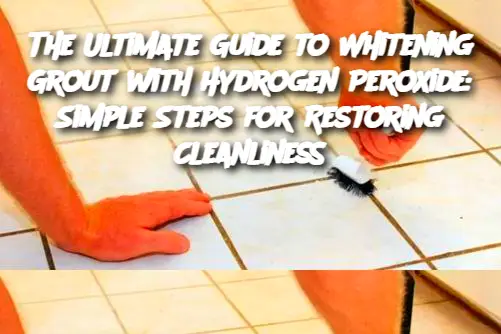ADVERTISEMENT
For Tougher Stains: If the grout has heavy staining, create a stronger mixture by adding a few drops of dish soap to the hydrogen peroxide and baking soda paste. The dish soap will help break down grease and stubborn stains.
For Sensitive Grout: If you have natural stone tiles, it’s important to test the hydrogen peroxide mixture on an inconspicuous area first, as it could affect the surface. For gentler cleaning, you can dilute the hydrogen peroxide with more water.
FAQ:
Can I use hydrogen peroxide on all types of grout?
Hydrogen peroxide works well on most types of grout, but if you have colored or natural stone grout, it’s best to test the mixture on a small, hidden area to avoid discoloration.
How often should I use hydrogen peroxide on grout?
For regular maintenance, once a month is usually enough. However, if you notice stubborn stains, feel free to use the treatment more frequently.
Will this method work for moldy grout?
Yes! Hydrogen peroxide is a natural mold and mildew killer. If your grout has mold or mildew, the paste can help eliminate the growth. Make sure to scrub thoroughly and rinse the area well.
Is hydrogen peroxide safe for my tiles?
Hydrogen peroxide is safe for most tile surfaces. However, avoid using it on porous tiles like marble or granite, as it may cause discoloration. Always test it in a small area first.
By following these simple steps, you can restore the white, fresh appearance of your grout without the need for harsh chemicals or expensive products. Happy cleaning!
ADVERTISEMENT
